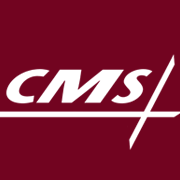CMS Touts Progress of State-Led Alternative Payment Model
Six states participating in a CMS initiative have tied more patients and providers to alternative payment models.

- States participating in the first phase of the State Innovation Model Initiative have made significant progress in implementing alternative payment models, CMS officials revealed midweek. Two of six states were able to link more than half of their population to a value-based care model.

On its official blog, CMS addressed the progress and lessons learned from several state-led projects to further tie provider payments to an alternative payment model, such as bundled payments and accountable care organizations (ACO). The states include Oregon, Vermont, Massachusetts, Arkansas, Minnesota, and Maine.
“The evaluation found that states have been successful in engaging a wide swath of the payer, provider, purchaser, and patient communities and building stakeholder consensus by balancing standardization and flexibility when expanding payment reforms statewide,” wrote Patrick Conway, MD, CMS Principal Deputy Administrator and Chief Medical Officer. “States have leveraged multi-payer efforts to implement payment and delivery system reforms, engaged the provider community in SIM-related [State Innovation Model] activities, and used a range of policy levers to effect change.”
CMS launched the State Innovation Model Initiative in April 2013 and, later that year, awarded the round one six states $250 million to implement value-based purchasing and alternative payment models across a variety of healthcare payers.
“In the SIM Initiative, CMS is testing models for how state governments can use their policy and regulatory levers to accelerate statewide healthcare system transformation from encounter-based service delivery to care coordination, and from volume-based to value-based payment,” added Conway.
Participants in round one developed projects that reimbursed providers based on quality and value, including patient-centered primary care transformations, integration of primary care with other health and social services, payment reforms that put the patient at the center of care delivery, and population health management programs.
The round one states also established plans to improve their health IT capabilities, CMS reported, by engaging and supporting providers that had limited health IT experience, requiring providers to report on data and implement health IT, and making patient-level data available to providers and systems to boost care coordination. The participants also strengthened their data analytics capabilities to foster quality improvement and payment reform by aligning measures and data infrastructure across payers.
According to the second year evaluation of the round one states, more providers and beneficiaries are now being covered under an alternative payment model. In Arkansas, over 70 percent of eligible Medicaid primary care providers are participating in the state’s patient-centered medical home that services 80 percent of their Medicaid population.
Value-based care models in Minnesota and Vermont are also currently covering about 50 percent of each state’s total population and 80 percent of the Medicaid population in Oregon and Vermont is covered by their alternative payment model projects.
Some other significant changes to care delivery and payment systems across the round one states include:
• Substantial involvement of public and private payers in the patient-centered medical home and episode of care models in Arkansas, such as Arkansas Blue Cross Blue Shield, QualChoice, and some large self-insured employers, including WalMart
• A majority of primary care providers in Vermont are participating in Medicaid and commercial ACOs, which provide services to nearly all residents and include about half of eligible beneficiaries as of late 2014
• The Coordinated Care Model in Oregon now includes commercial insurance carriers that have contracted with the state to cover state employees and Medicaid beneficiaries
While CMS is waiting to conduct quantitative results until the State Innovation Model Initiative matures, the federal agency noted that patient outcomes are also improving under the state-supported alternative payment models.
“[A]nalyses based on Medicare and commercial populations show that states were making progress on health outcomes, such as declines in emergency room visits and inpatient readmissions through models pre-dating SIM and models upon which SIM efforts are expanding,” Conway wrote. “Future evaluation reports will provide more detail on quantitative results and whether and how the SIM Initiative is affecting and accelerating trends in health outcomes and spending.”
Additionally, CMS explained that the State Innovation Model Initiative is a key player in the agency’s goal of linking 50 percent of payments to an alternative payment model by 2018. The state-led projects have facilitated the provider and payer relationships necessary to continue tying reimbursements to quality and value.
“CMS supports states through SIM and other innovation efforts to move towards this vision of multi-payer delivery system reform across an entire state,” Conway concluded. “Health system transformation and improvement happens at the state and local level and CMS will continue to support states in their transformation journey to improve care for people across the nation.”
Dig Deeper:
• What is Value-Based Care, What It Means for Providers?
• Top 5 Facts to Know about MACRA Alternative Payment Models
